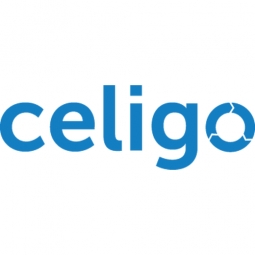Download PDF
Cellebrite unifies its lead-to-cash process with the Celigo Salesforce – NetSuite Connector
Technology Category
- Platform as a Service (PaaS) - Connectivity Platforms
- Application Infrastructure & Middleware - Data Exchange & Integration
- Functional Applications - Enterprise Resource Planning Systems (ERP)
Applicable Industries
- Software
- Security & Public Safety
Applicable Functions
- Sales & Marketing
- Business Operation
Services
- System Integration
- Software Design & Engineering Services
The Challenge
Cellebrite needed to tightly integrate its CRM and ERP systems to ensure they 'speak the same language' and are aligned at all times. The integration had to be cloud-based to align with the company's strategy of managing all business applications through the cloud. Additionally, the integration had to be implemented simultaneously with the launch of Salesforce and NetSuite, adding complexity to the project. The company also faced the decision of whether to build a custom integration or use a prebuilt solution.
About The Customer
Cellebrite is a global leader in mobile data technology, specializing in mobile forensics and mobile lifecycle management solutions. The company provides comprehensive solutions that enable access to mobile data sources, extending investigative capabilities and generating reliable evidence. With headquarters in Israel and operations across the Americas, APAC, and EMEA, Cellebrite employs 550 people worldwide. The company's primary market is law enforcement, which necessitates frequent hardware shipments and a robust fulfillment cycle.
The Solution
Cellebrite chose the Celigo Salesforce – NetSuite Connector for its ability to support a simultaneous go-live for both Salesforce and NetSuite. The Connector allows Cellebrite to manage its lead-to-cash process as a single unified system, tracking leads and opportunities in Salesforce and converting them to customers and orders in NetSuite. The integration provides the sales team with full visibility into customer purchases, invoices, payments, and other financial activities. The Celigo team played a crucial role in the implementation, advising Cellebrite throughout the process and guiding them through each step. The Connector's flexibility allowed Cellebrite to tailor integration use cases to their specific needs, such as the sales order creation process.
Operational Impact
Quantitative Benefit
Related Case Studies.

Case Study
Smart City Public Safety
Amyx+ worked with a local government authority to develop an Internet of Things-enabled public safety strategy. In the current state, vigilance meant manually scanning through potentially hundreds of analog surveillance videos feeds. Manual, costly and ineffective, the local agency desired to transition from analog to digital CCTV, apply computer vision and other technologies to automatically detect potential crime in progress, expedite and streamline emergency calls and integrate with personal wearables to ensure the safety of their citizens.

Case Study
Intamac And Securitas Collaborate To Improve Monitoring Structures
Securitas wanted to give new and existing customers a proposition that was unlike anything they had offered before, a security system that broke the traditional mould but took advantage of the monitoring infrastructure that was already in place, including the manned response capabilities and alarm receiving centres.

Case Study
EUROPEAN SYNCHROTRON RADIATION FACILITY USES WIN-911 SOFTWARE TO MANAGE ALERT SY
As one might easily imagine, there is no shortage of opportunities for disaster to strike in such a large and complex operation. Because of this, the ESRF is now using WIN-911 alarm notification software to help protect the facility and its occupants.








